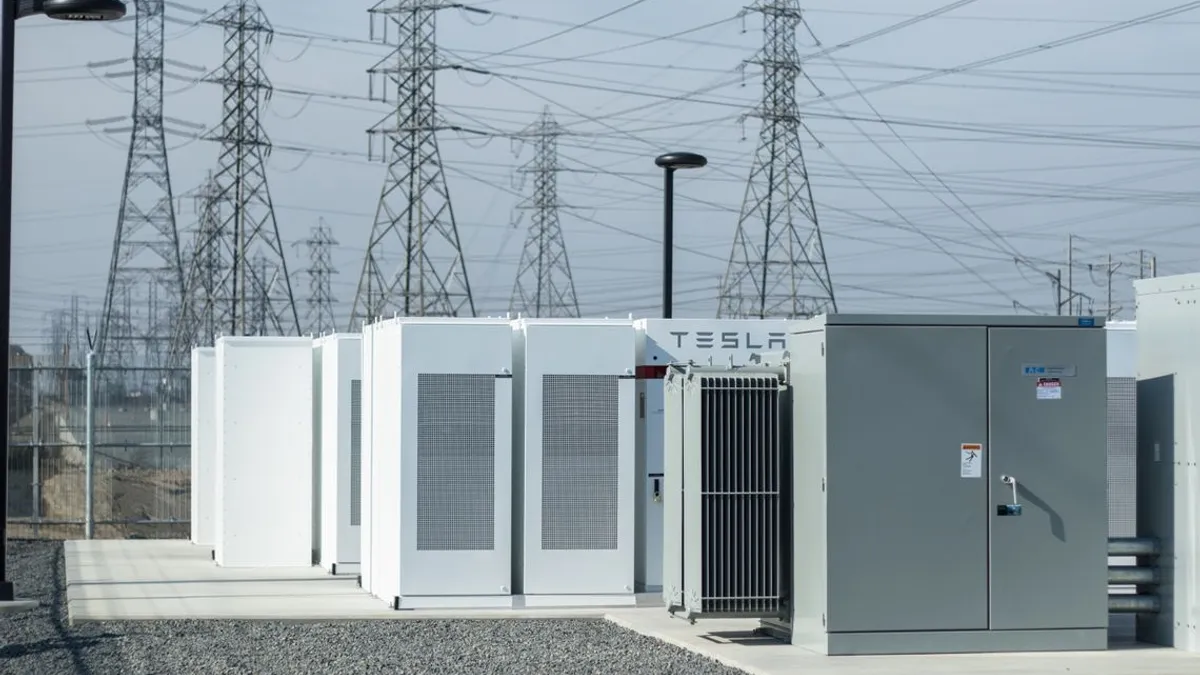Dive Brief:
-
The cost of electricity from batteries has decreased by 76% since 2012, making renewable energy combined with battery storage increasingly competitive with coal and gas generation.
-
Within the past year, the levelized cost of electricity (LCOE) for lithium-ion batteries has fallen 35% to $187/MWh, according to the latest analysis by Bloomberg New Energy Finance (BNEF).
-
BNEF's report comes on the heels of an Energy Innovation report that said wind and solar could replace approximately 74% of the U.S. coal fleet at an immediate savings to customers.
Dive Insight:
The ever-decreasing cost of electricity from batteries is giving fossil fuels a run for their money as renewable energy projects combined with battery storage become increasingly competitive power supply options.
The LCOE for lithium-ion batteries has fallen 35% to $187/MWh since the first half of 2018, research company BNEF said Tuesday.
Going back to 2012, BNEF found the cost of battery storage has dropped 76%, from almost $800/MWh.
BNEF described the cost improvements in lithium-ion batteries as the "most striking finding" in its LCOE Update for the first half of 2019.
"Our analysis shows that the LCOE per megawatt-hour for onshore wind, solar [photovoltaic] and offshore wind have fallen by 49%, 84% and 56% respectively since 2010," Elena Giannakopoulou, head of energy economics at BNEF, said in a statement. The LCOE per MWh "for lithium-ion battery storage has dropped by 76 percent since 2012, based on recent project costs and historical battery pack prices."
Giannakopoulou attributed the decline to technology innovation, economies of scale, price competition and manufacturer experience.
The sharp cost reduction across the spectrum for renewable energy resources over the past decade means that battery storage in combination with solar or wind projects can start competing with traditional coal- and gas-fired generation to supply dispatchable power, even in markets without subsidies, the report stated.
Meeting the morning and evening peaks of electricity demand has been a challenge for solar and wind energy, given their intermittent nature. As a result, technologies capable of delivering energy whenever the grid needs it, such as open-cycle gas turbines and gas reciprocating engines, had a competitive advantage, according to the report. This advantage is now disappearing.
"Solar PV and onshore wind have won the race to be the cheapest sources of new 'bulk generation' in most countries, but the encroachment of clean technologies is now going well beyond that, threatening the balancing role that gas-fired plant operators, in particular, have been hoping to play," Tifenn Brandily, energy economics analyst at BNEF, said in a statement.














